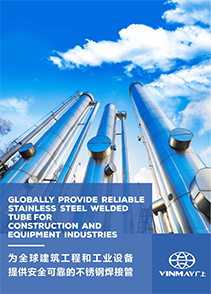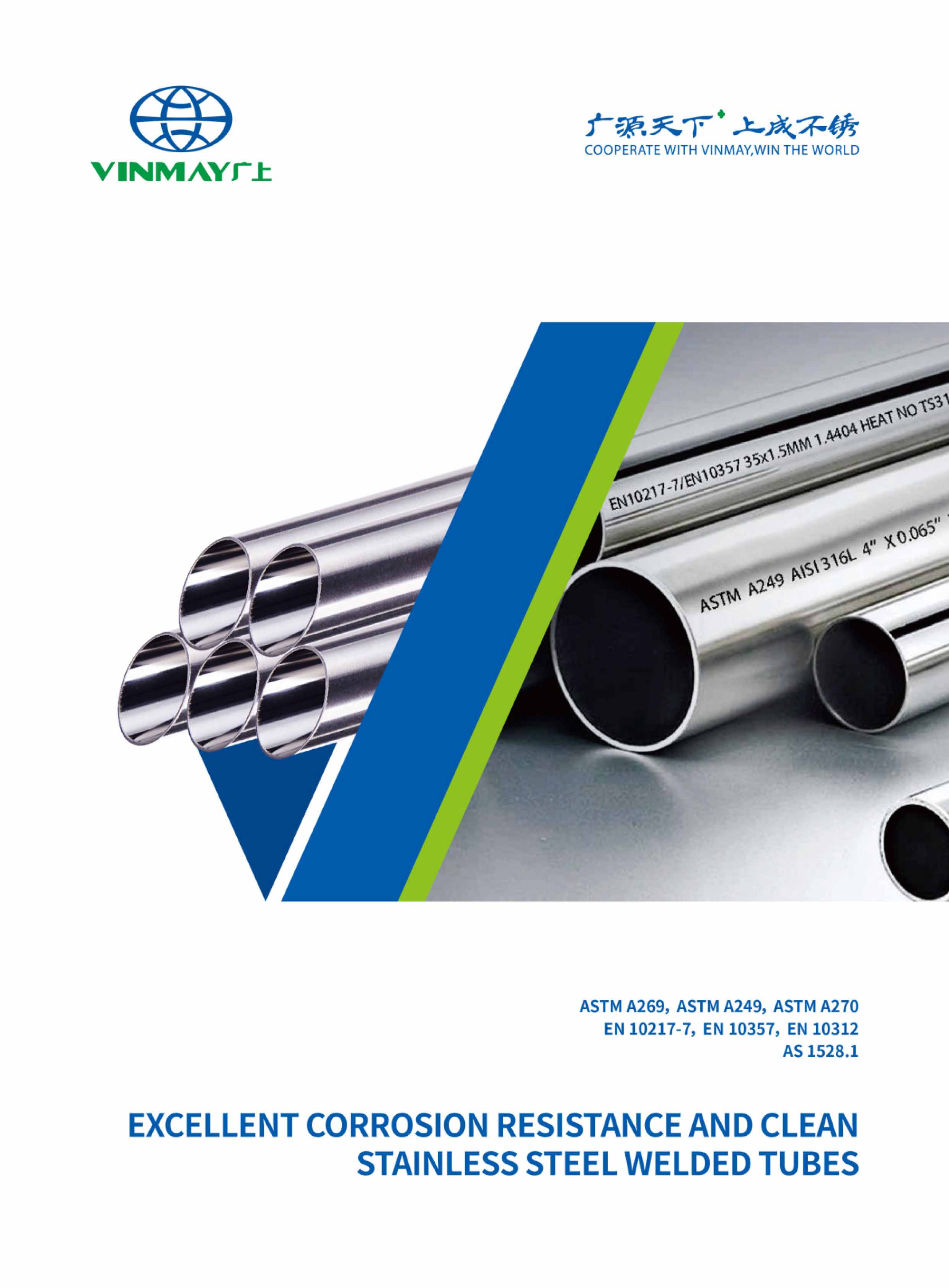Choosing the right piping material is critical when designing or upgrading a water system. Among the most common options are stainless steel and PVC (polyvinyl chloride) tubes. Both materials serve unique purposes and are preferred in various settings. However, the debate between Stainless Steel Vs PVC Water Tube is ongoing, especially for applications where durability, hygiene, pressure resistance, and longevity matter most.
This blog explores the key differences, strengths, and limitations of Stainless Steel Vs PVC Water Tube, providing you with a comprehensive understanding to help you make an informed decision.

The first point of comparison in the Stainless Steel Vs PVC Water Tube discussion lies in material composition.
Stainless steel tubes are made from a blend of metals, including iron, chromium (usually around 10.5% or more), nickel, and sometimes molybdenum. These elements provide corrosion resistance, strength, and heat tolerance. Stainless steel, particularly 316 grade, contains molybdenum, which enhances resistance to chlorides and other chemical agents.
PVC tubes, on the other hand, are manufactured from synthetic plastic polymer. They are lightweight, inexpensive, and non-metallic. While PVC is resistant to many chemicals and corrosion, its mechanical strength and heat resistance are considerably lower than that of stainless steel.
Thus, in terms of composition, the Stainless Steel Vs PVC Water Tube comparison already reveals a fundamental difference in durability and chemical behavior.
Durability is a major factor when comparing Stainless Steel Vs PVC Water Tube systems.
Stainless steel pipes can last 50 years or more, even in harsh conditions. They withstand impacts, pressure changes, and environmental stress without cracking or degrading. Their resilience makes them ideal for high-performance and long-term installations.
PVC tubes typically last between 25–40 years, depending on environmental exposure, water quality, and usage. While they resist corrosion, they are more prone to cracking under stress or extreme temperature fluctuations.
For long-term infrastructure investment, stainless steel clearly outperforms PVC in the Stainless Steel Vs PVC Water Tube durability contest.
One of the strongest arguments in favor of PVC in the Stainless Steel Vs PVC Water Tube comparison is its affordability.
PVC pipes are much cheaper upfront—both in terms of material cost and labor. Their light weight means they are easier and cheaper to transport and install.
Stainless steel, especially grades like 316, is significantly more expensive. However, it's crucial to evaluate lifecycle cost. Stainless steel’s longer lifespan, reduced maintenance needs, and lower failure rates often make it more economical in the long run.
So, when looking at total cost of ownership in the Stainless Steel Vs PVC Water Tube decision, stainless steel offers long-term value despite the initial higher expense.
Installation complexity is another important factor in the Stainless Steel Vs PVC Water Tube debate.
PVC tubes are lightweight and easy to cut, glue, and fit using basic tools. They are preferred in residential and DIY projects for their simplicity.
Stainless steel tubes, on the other hand, require more specialized equipment for cutting, welding, or threading. Installation is best handled by skilled professionals, which can raise the labor cost.
That said, once installed, stainless steel systems tend to require far fewer interventions over their lifespan, reducing total downtime and repair frequency.

Temperature performance is where stainless steel shines in the Stainless Steel Vs PVC Water Tube comparison.
Stainless steel tubes can handle temperatures of up to 870°C (1600°F) for certain grades without losing strength. This makes them suitable for both hot and cold water systems, industrial applications, and steam transport.
PVC tubes have a much lower heat tolerance, typically handling temperatures up to 60°C (140°F). Beyond this, they begin to soften, deform, or fail.
In systems requiring hot water or exposure to fluctuating temperatures, stainless steel is the more reliable option in the Stainless Steel Vs PVC Water Tube scenario.
When comparing Stainless Steel Vs PVC Water Tube, pressure resistance is another critical differentiator.
Stainless steel tubes are rated for high pressure applications, often used in industrial, commercial, and municipal systems. They maintain structural integrity under extreme conditions and are less likely to burst or crack.
PVC tubes are pressure-rated, but their capabilities are much lower. Pressure fluctuations or surges can weaken them over time, particularly if exposed to high temperatures simultaneously.
In high-pressure systems, stainless steel offers unmatched reliability, giving it the upper hand in the Stainless Steel Vs PVC Water Tube analysis.
Mechanical strength refers to the tube’s ability to withstand physical force. This factor strongly favors stainless steel in the Stainless Steel Vs PVC Water Tube conversation.
Stainless steel resists bending, cracking, impact, and compression. It supports external loads and physical strain without deforming.
PVC, being a thermoplastic, is more brittle and vulnerable to impact, especially in cold weather. Pipes can crack or shatter if dropped or improperly supported.
Thus, stainless steel offers superior mechanical strength and security in physically demanding environments.
When comparing Stainless Steel Vs PVC Water Tube systems, chemical compatibility is key, especially for water quality.
316 stainless steel is highly resistant to acids, bases, and chlorides. It does not leach chemicals into the water, making it ideal for potable water systems.
PVC is resistant to a wide range of chemicals, but it may not be compatible with certain solvents or organic compounds. Additionally, concerns have been raised about chemical leaching and microplastic contamination, especially as the material ages.
So, in applications where water purity and chemical resistance matter, stainless steel outperforms PVC in the Stainless Steel Vs PVC Water Tube comparison.
One of the strongest advantages of stainless steel in the Stainless Steel Vs PVC Water Tube comparison is its resistance to corrosion.
316 stainless steel is especially well-suited for harsh environments, including those with chlorinated water, saltwater, or acidic pH levels. The chromium oxide layer on stainless steel protects it from rust and surface degradation.
PVC is inherently corrosion-resistant due to its non-metallic nature. However, it degrades over time from UV exposure, chemical interactions, and oxidation, especially in outdoor or high-UV environments.
Thus, while both materials resist corrosion, stainless steel maintains its integrity far longer, making it a clear winner in this category.
Summarizing the above, here’s why stainless steel water pipes are often preferred over PVC in critical water systems:
While PVC is cost-effective and easy to install, its limitations in durability, temperature range, and chemical strength often make stainless steel a more dependable long-term solution.
If you're leaning toward stainless steel after reading this comparison, here’s why 316 stainless steel pipes in particular are highly recommended:
Thanks to its molybdenum content, 316 stainless steel provides exceptional corrosion resistance, even in saltwater, chlorinated water, and industrial environments.
316 stainless steel pipes are built to last. They don’t degrade, crack, or weaken easily, making them ideal for municipal water lines, hospitals, and high-demand applications.
316 stainless steel tolerates extreme heat without losing structural integrity, ideal for hot water and industrial steam systems.
The non-porous surface of 316 stainless steel prevents bacterial growth. It’s the top choice for hospitals, food processing, and drinking water systems.
Stainless steel is 100% recyclable and does not release harmful chemicals into the environment, unlike some plastics. Choosing it supports green building and sustainability goals.
Unlike PVC, stainless steel requires minimal maintenance over its lifetime. It doesn't sag, crack, or degrade, reducing long-term costs.
For exposed applications, stainless steel offers a sleek, modern look that PVC cannot match. It's commonly used in visible piping systems in commercial spaces and high-end architecture.
Read More:
The Life Expectancy of 316 Stainless Steel
The debate of Stainless Steel Vs PVC Water Tube involves many variables, but one conclusion is clear: stainless steel offers unparalleled strength, hygiene, longevity, and overall performance in demanding water system applications.
While PVC has its place in cost-sensitive, low-pressure, or temporary setups, it simply cannot match the resilience and safety profile of stainless steel—especially when 316 stainless steel is used.
If your goal is long-term reliability, environmental sustainability, and water purity, the decision between Stainless Steel Vs PVC Water Tube should lean strongly toward stainless steel.



